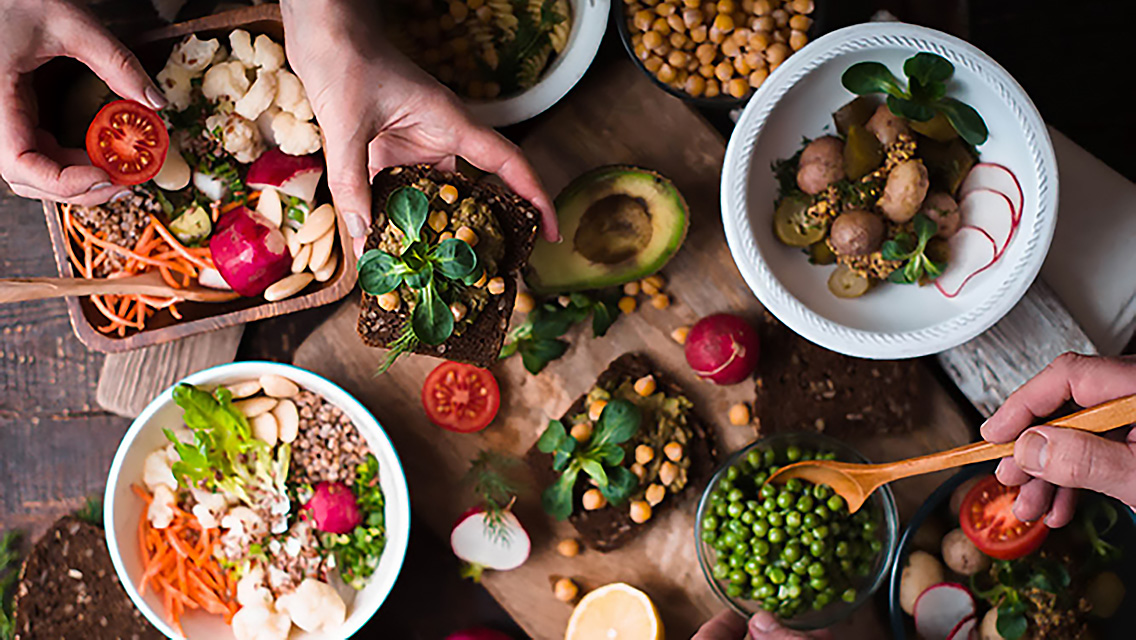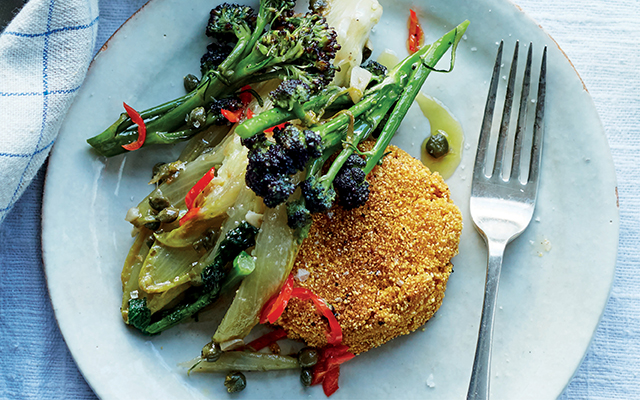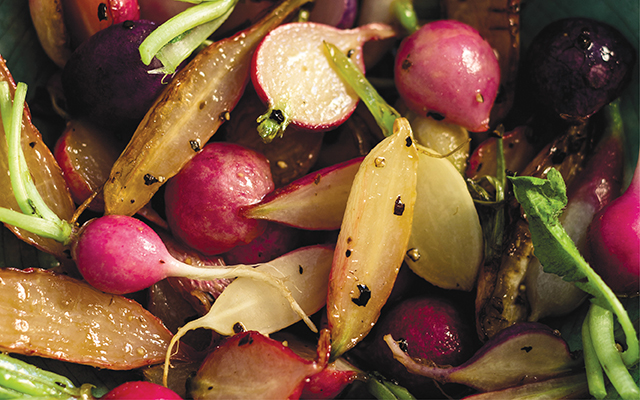1. Start where you are. If eating more veggies sounds good in theory but you already struggle to hit 3 cups a day, start by fully committing to those 3 cups. You may be surprised how just increasing your awareness can kick-start a veggie habit and inspire you to add on.
Not a big fan of veggies? Paul Kriegler, RD, a nutritionist with Life Time in Chanhassen, Minn., suggests writing a list of vegetables you do like, and then adding four or five you’d be willing to try.
Believe it or not, your palate can change. (To learn how to retrain your taste buds to prefer whole foods, see “Take Back Your Tastebuds.”)
2. Be a savvy shopper. If local, seasonal pickings are slim or your budget feels too tight for fresh (ideally organic) vegetables, you can still aim high. Terry Wahls, MD, counsels people on strict food budgets to buy onions, garlic, and root vegetables — which keep for weeks — in bulk, and to stock up on dried mushrooms, as well as canned vegetables. She also recommends frozen vegetables, which are typically flash-frozen shortly after harvest and retain their nutritional density.
“Do the best you can,” says Wahls. “But at a certain point, you may want to dedicate more of your budget to vegetables. When people begin to see the link between what they eat and their health, their priorities tend to shift.”
3. Cook up some magic. Vegetables that seem ho-hum prepared one way can surprise you when prepared another way. “A vegetable can taste very different if it’s roasted versus steamed or grilled,” Kriegler says.
Turn a zucchini into a plate-full of zoodles and top with tomato sauce, pesto, or more vegetables (find a recipe at “Zucchini-Pasta Primavera“). Grill a head of romaine lettuce or snack on raw veggies sprinkled with a mixture of curry and cinnamon.
And remember: Those recommended 9 cups are measured raw. “A cup of raw spinach turns into about one-eighth of a cup when it’s even lightly steamed,” says Kriegler. “So you can get to 9 or 10 cups a day much easier than you might think.”
No need to break out the measuring cups. This guide, adapted from The Wahl’s Protocol for Life by Terry Wahls, MD, is a handy way to estimate just how much of your favorite veggies counts as a cup.
What’s In A Cup?
- 1 avocado
- 8–10 stalks asparagus
- 1 beet
- 1 bell pepper (large)
- 1/4 head of broccoli
- 5 large Brussels sprouts
- 1/6 head of cabbage
- 1 large carrot
- 1/4 head of cauliflower
- 2 stalks celery
- 1/3 large cucumber
- 2 cloves garlic*
- 4 lettuce leaves
- 5 mushrooms
- 34 olives (black)
- 1 onion
- 1 small rutabaga
- 1 handful spinach
- 1 large tomato
- 1/3 large yam or sweet potato
* Wahls gives garlic extra credit for its nutrient density.
4. Baby your belly. Vegetables are a significant source of fiber, which is great for gut health — and for cleaning out your system. That’s another reason to start slow and build up, advises nutritionist John Bagnulo, MPH, PhD, who notes that some folks may benefit from a gradual increase in their intake.
Nutritionist Maggie Ward adds that cooked or fermented vegetables can be gentler on the belly than raw. “Cooking can soften fiber like cellulose and make it easier to digest,” she says. “The salt and bacteria involved in fermentation also break food down somewhat and improve its digestibility.”
As you add vegetables, you’ll likely start seeing more-efficient elimination.




This Post Has 0 Comments